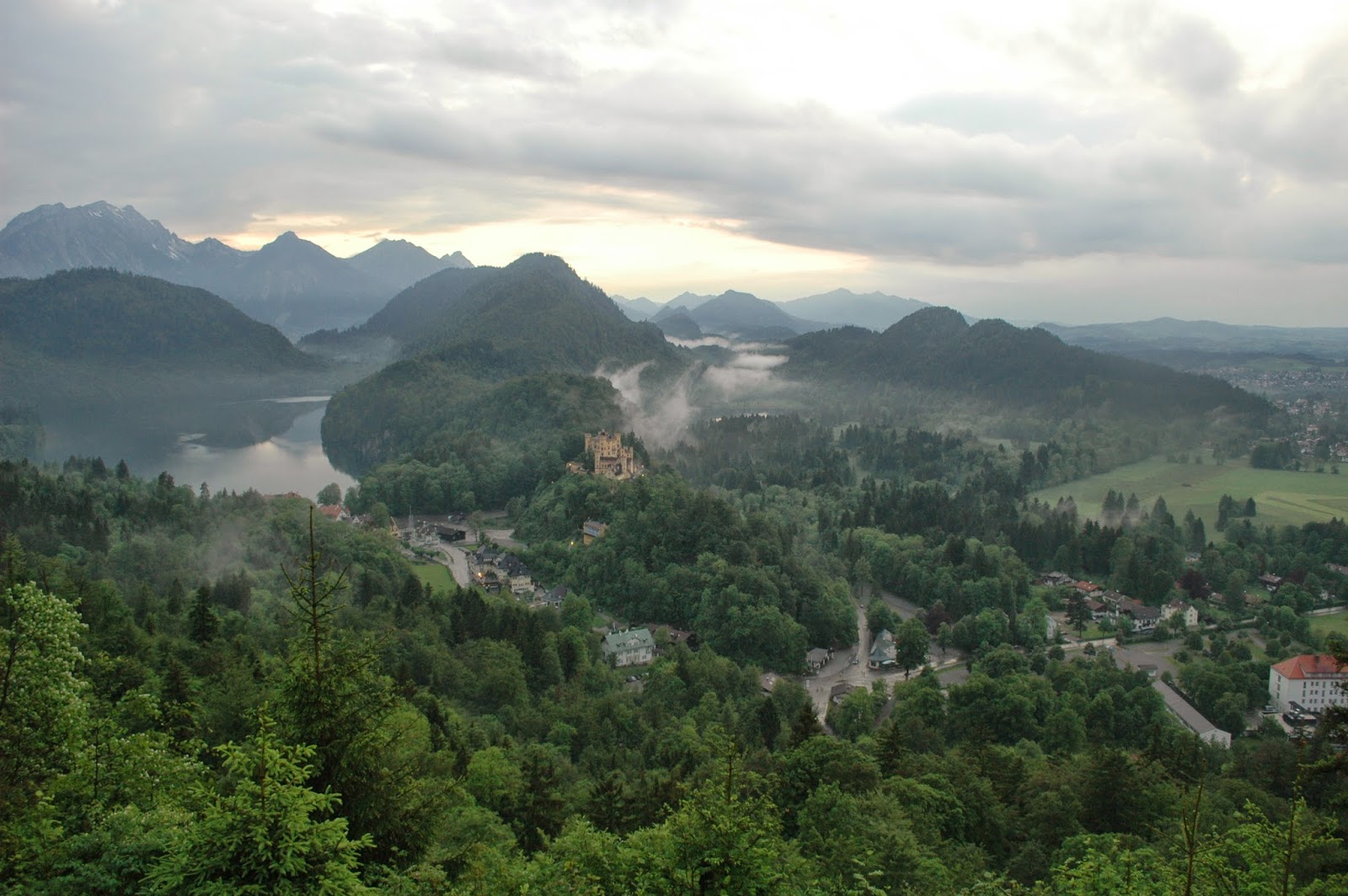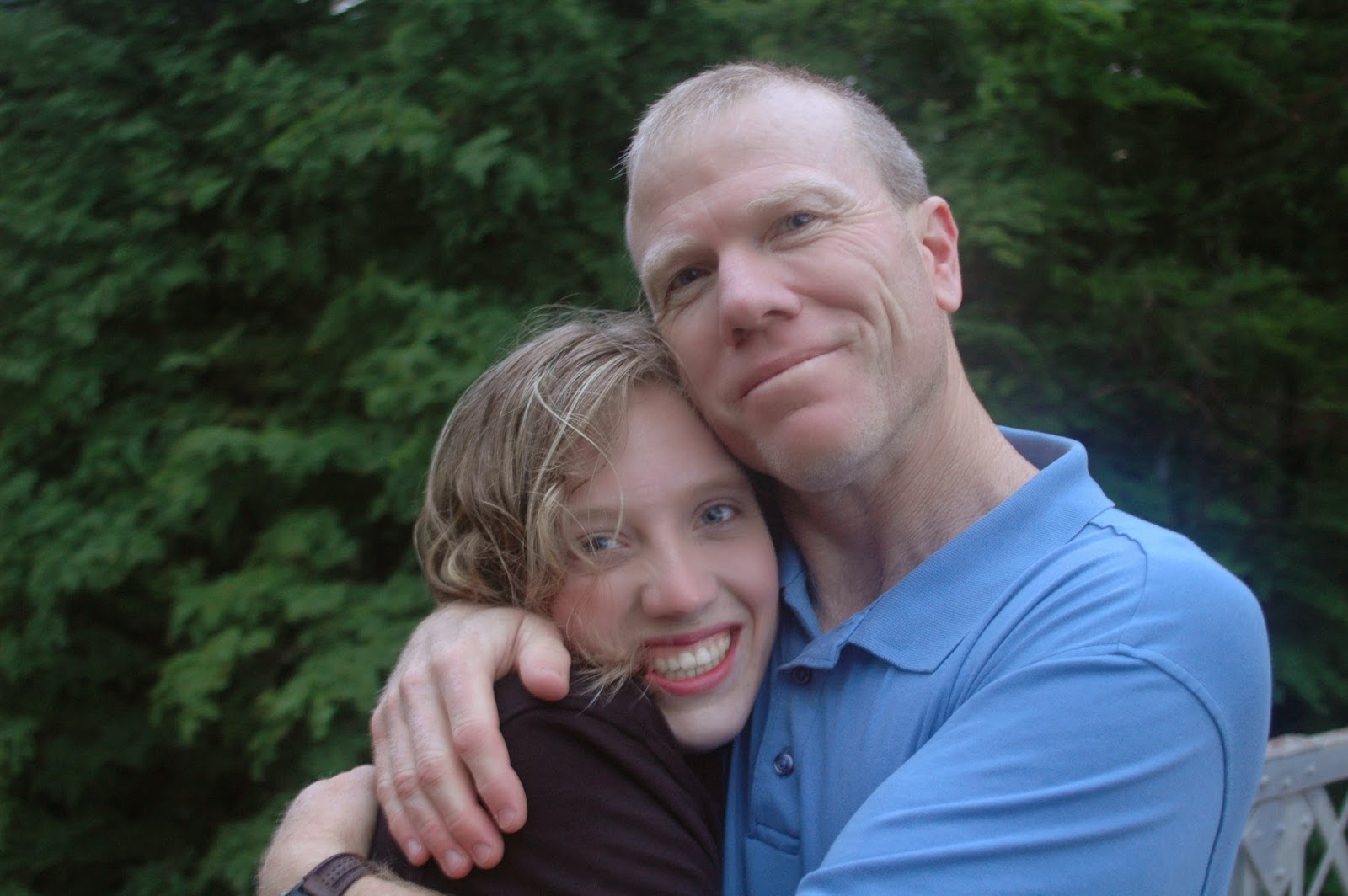As the colonel of a combat engineer division and the only group who had access to power equipment, Papa was given the horrendous task of cleaning up the Dachau Concentration Camp. As he and his soldiers worked to clean up and dispose of the thousands of bodies which were rotting in and around the camp, Papa found that his men could not physically stand up to the task. Soldiers were vomiting and suffering severe nausea from the grotesque sights and smells they were were being forced to endure. Papa went to the nearby town of Dachau,whose residents had so long ignored the plight of the hundreds of thousands of human beings who passed through the camp, and singled out any who were capable of running power equipment. He then brought them back to the camp and forced them to begin the work of digging the mass graves and bulldozing the bodies in. The rest of the civilians were brought in to tour the camp and see the evil that had happened there. Today, the video inside the Dachau memorial shows the residents of Dachau slowly filing by the gassing showers, crematoriums, and holding rooms full of corpses as American soldiers look on.
Our time in Dachau was marked by utter disbelief at what man without God is capable of becoming. As we wandered through acres of memorials and saw the marks of one atrocity after another, our minds could not accept how one human being could do this to another. How could a nation fall so far as to accept the mass murder of human beings? How could the people who lived just outside of this camp choose to ignore the chalky gray smoke of thousands of bodies being cremated? How could they pretend not to see the faces of haunted human beings who were being led to their death?
 |
| Today the history of Dachau can be read in the cold, calculating, endless rows of barbed wire. |
 |
| Two of the barracks stand today as they did in 1945. |
The audio tour we purchased for our time in Dachau provided for us a complete history of the concentration camp and what happened here. Seeing the camp was a horrible but poignant experience we will never forget. The history of this place must never be forgotten.
Dachau Concentration Camp was the first Nazi camp established in Germany. It was built on the grounds of an old munitions factory and became functional on March 22, 1933. Dachau was built to hold political prisoners, intellectuals, and members of religious groups who protested against what was happening in Germany. Intellectuals or students who realized the probable outcome of Hitler's regime and his tactics were the first to be interned in Dachau. Virtually every German community had intellectuals arrested and taken to Dachau. A chant became common in Germany during the war:
"Lieber Gott, mach mich dumm, damit ich nicht nach Dachau kumm" which translates to "Dear God, make me dumb, that I may not to Dachau come".
Anyone who protested the atrocities of the regime or raised a voice in defense of the innocent could readily be sent to this camp. Dachau held more Christian prisoners than any other camp - over three thousand. It also had an entire barracks designated to Catholic priests. Although the German priests received relatively good treatment, the guards especially despised the Polish priests. Of everyone in the camp, they were most often subjected to medical experiments, beatings, and punishment.
Dachau was a model camp by Nazi standards, and all other concentration camps build in World War II were replicas of this one. The sadistic and unbelievably barbaric SS guards who wielded such power over the prisoners here at Dachau were also considered exemplary. A highly sought-after school for the training of SS officers was established in the camp. For a few brief months during WWII, the concentration camp was shut down to allow for more officers to pass through training.

The perimeter of the camp is surrounded by a water canal and a ten foot section of barbed wire. The area in the picture above, plus a small section on the inside side of the canal, was the kill zone. German soldiers sitting in the watch towers were armed with machine guns and had orders to kill on sight anyone who passed into the zone. Any soldier responsible for "preventing an escape" by killing a prisoner in the zone was given a thirty day furlough. Human lives in exchange for a furlough.
The soldiers were known to take personal belongings from the prisoners, throw them into the kill zone, and then shoot the prisoners as they attempted to retrieve their possessions. At other times, starving and sickened prisoners would willingly run into the zone, choosing a quick death over the prolonged agony of starvation, torture, medical experiments, and hard labor.
In 1937, forced slave laborers expanded Dachau to a capacity of 6,000 victims. It was still not enough to hold all the prisoners that were being sent to the camp. Due to the intellectuals and religious figures held in Dachau, the public sentiment towards the camp's prisoners was very positive. In an attempt to undermine that, the Nazis began bringing convicted criminals into the camp. The criminals were put in positions of command over the intellectual and religious interns, responsible particularly for 'preventing escapes' while on the forced marches or when the prisoners were being sent to work as slave labor . The criminals were well known for letting the weak or sick prisoners fall behind, accusing them of attempted escape, and executing them on the spot.
In 1942, one of the barracks was turned into a experimental medical unit. Although we all had studied the history of the Nazi medical atrocities, it was a very different thing to walk by the ruins of the building where the experiments happened, and to walk the trail that the prisoners once walked as they came in for the trials. The Nazis performed hellish human experiments on the victims of Dachau - altitude tests, vaccination trials, hypothermia tests, tuberculosis and malaria tests, and halting excessive bleeding, among others. Hundreds, if not thousands of prisoners died or were permanently crippled by these utterly inhuman experiments.
 |
| The monument to the unknown prisoners |

 |
| The gateway leading in the crematorium and the gassing showers |
 |
| This room was used to hold the corpses of the gassed prisoners before they were cremated. When Papa was here in 1945, this room was full of bodies. |

 |
| The door leading into the gassing chamber |
 |
| "Shower" |
After having seen the gassing showers and crematoriums, we understood by Papa would never talk about his experiences at Dachau. He was asked to return to the camp in 1965 when Dachau was turned into a memorial, but he refused. His children relayed to us that he told them he would never step into Dachau again. It is hard to imagine the horrific carnage that the Allied soldiers had to see in this place.
Dachau was also the execution place of thousands of Russian prisoners of war. Since the lives of the captured soldiers were considered worthless by camp staff, their executions were largely unrecorded; there is no accurate estimate of how many perished. The common thought is that many thousands were shot here. A few mass killings were recorded; in 1941, 4,000 Russian POWs were brought to Dachau and shot, row by row.
One of the perimeter walls of the crematorium complex was used as the execution wall, complete with a deep ditch beside for the blood to run off into. When the camp was turned into a memorial in 1965, the wall had to be rebuilt, as the entire thing had been demolished by the thousands of machine gun bullets that hit the wall during executions. There is now a memorial to the many unknown soldiers who were shot at the wall. In the crematorium complex there are also two gallows and several areas where prisoners were shot. So many of the deaths are unrecorded...so many people never registered. We will never know how many people met their deaths in Dachau's execution and crematorium complex.
 |
| A memorial chapel at Dachau |
As the Germans became more desperate, Dachau was flooded with more and more prisoners. The camp, designed for 6,000 prisoners, swelled to almost 70,000. Dachau was no longer a place for political prisoners, but also for Jews, Gypsies, Poles, homosexuals, and anyone the Nazis considered inferior. The conditions were brutal, with hundreds dying every day; typhus was rampant due to the overcrowding and poor sanitation, and people were worked to death in ammunition factories. As the Allies grew closer, more and more prisoners were shipped into Dachau. To keep the death numbers of their 'exemplary camp' low, the majority of the prisoners sent to Dachau marked for death in the gas chambers were passed along to the nearby death camps for their actual execution.
Just outside the doors of the camp, we saw the remains of the railroad tracks that once carried trains packed with prisoners in and out of Dachau. In the graphic video of Dachau's history that we watched at the memorial, we saw videos of the same train station, taken on the day of Dachau's liberation. A few days before Allied troops fought their way to Dachau, trains full of thousands of grotesquely emaciated people - including families and children - arrived at the concentration camp. They had endured days of travel with no food or water. Thousands had died in the overcrowded box cars and many more collapsed at the unloading point. The first Allied soldiers who arrived at Dachau saw and recorded for history a train station full of thousands of shrunken, decaying corpses, many still lying in the trains they had collapsed in. One liberating soldier recorded the heart-wrenching story of a little girl who approached them asking for help to find her mommy. A transfer from the death camp Auschwitz, she could not remember her name; she only knew herself by the tattooed number on her arm. All she could tell them was that she once had a mother named "Mommy"; she knew nothing else about her family, her name, or where she came from.
Dachau was liberated by American soldiers on May 8th, 1945. The 300 SS guards who had remained in the camp were lined up and shot by the liberating forces, who were utterly shocked by the conditions of the camp. Some guards had tried to escape by dressing in prisoners clothing, but the prisoners identified them to the Americans, and in many cases, killed them themselves. There was a massive celebration of freedom from the Nazis, and inmates presented to their liberators an American flag that they had secretly sewn from their clothing. Approximately 32,000 souls were liberated that day.
 |
| Mothers and children released from Dachau. These children, unlike hundreds of thousands of infants who were killed by the genocide of the Nazis, had a chance to live, grow, and have a life. |
 |
| Dachau prisoners wave, cheer, and salute their American liberators from behind the rows of barbed wire. |
We will never know how many people died in Dachau. Hundreds of thousands of people passed through Dachau, but only 30,000 have their deaths recorded in the camp registers. It is a undeniable fact that the 30,000 recorded deaths is a preposterously low estimate; however, there is limited evidence and very little chance that anyone will ever be able to know just how many people died here.
A monument designed by the survivors, dedicated to the many lives lost, stands in Dachau today, a silent and graphic reminder to all of us to remember the horror and genocide that happened here.
May we never forget.


























.JPG)


.JPG)
.JPG)



.JPG)
.JPG)






